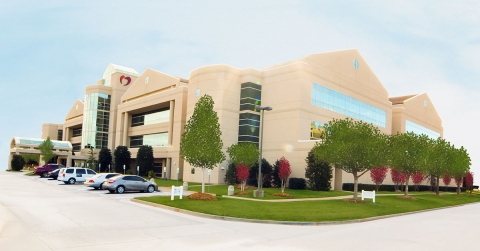Benefits of a Physician-Owned Hospital

Most patients don’t think too much about who owns the hospitals they turn to for medical care. From the patient perspective, the owners and administrators feel pretty removed, while the doctors, nurses, and support staff play a bigger role in the patient experience. Yet the ownership structure and the decisions they make can impact every aspect of a hospital stay.
In the United States, between 100 and 150 hospitals are physician owned, and that small group of hospitals consistently scores higher in quality and patient satisfaction surveys. When a hospital is owned by the physicians who work there, they are directly connected to the patient experience and create hospital policies that benefit everyone.
Here are three significant benefits of physician-owned hospitals.
Patient-focused layout, policies, and staffing
At Oklahoma Heart Hospital, our physician-owners had a hand in designing every aspect of our facilities. When physicians with a deep understanding of the hospital experience oversee the design, it creates more efficiency for the entire staff and a better environment for patients.
We know patients prefer to remain in one room, so we designed our facility to minimize movement between rooms, and we bring as many services to the room as possible instead of transporting the patient to services.
Our staffing is designed with the same principles in mind. Because physicians make the policies, patient care is a top priority. Nurses are focused on a small number of patients, which allows for better continuity of care and fewer people coming in and out of rooms. When a patient needs to be transported for any type of screening or procedure, the team involved in that procedure handles the transport rather than a separate transport team.
Other staffing policies directly affect the patient experience as well. We empower our nurses to provide as many services as safely possible without having to check in with the doctor. For example, in most hospitals, nurses would be required to call a doctor for routine treatments like Tylenol for a headache. While the nurse waits for a response, the patient is waiting for treatment. We place a priority on training and empowering our nurses to expedite routine services.
High employee retention rates
When a hospital is constantly training new staff members, it disrupts the flow of patient care. Physician-owned hospitals have more direct impact on both the policies and the culture that impact employee retention. At OHH, our nurse turnover rate is well under 5%, which is significantly lower than the average hospital turnover rate of 25% to 30% nationally. Nurses at OHH also have an average of 10 years of cardiac experience.
We keep employee retention rates high by paying attention to their needs and having an open-door policy for feedback. Any employee can submit ideas to improve the quality of patient care or their work environment. After receiving feedback, we are diligent to respond to employee needs. By responding to our employees, we create a positive environment that in turn has a positive impact on patient care and satisfaction.
Ability to make quick decisions
In a typical hospital, there are many layers of management to work through in order to make decisions, add a program, or change something that isn’t working. At OHH, we have intentionally kept a lean and nimble management structure.
There are two main ways this benefits our patients. First, they have an advocate in the decision-making process. Second, we can pivot quickly to implement the latest treatments and best practices.
When physicians are in the boardroom as decisions are made, patients have a direct advocate. In discussions around staffing and capital improvements, it is easy for boards made up of executives to lean toward cost effectiveness and savings without realizing the true impact on patient care or staff. With physicians directly involved in the process, we know that every decision we make is centered around patient care.
A lean management structure also allows us to remain current in our approach to treatment. For example, about 10 years ago there was a well-done study suggesting a different approach to treating patients in full cardiac arrest. In the span of one meeting, we were able to review the data and make the necessary decisions to implement the treatment. Many hospitals took years to work their way through the process before coming to the same conclusion.
Though you may not have previously considered how the hospital you choose is managed, it directly affects patient care in a variety of ways. For the highest patient and employee satisfaction, thoughtful design, and efficient decision making, consider choosing a physician-owned hospital.




